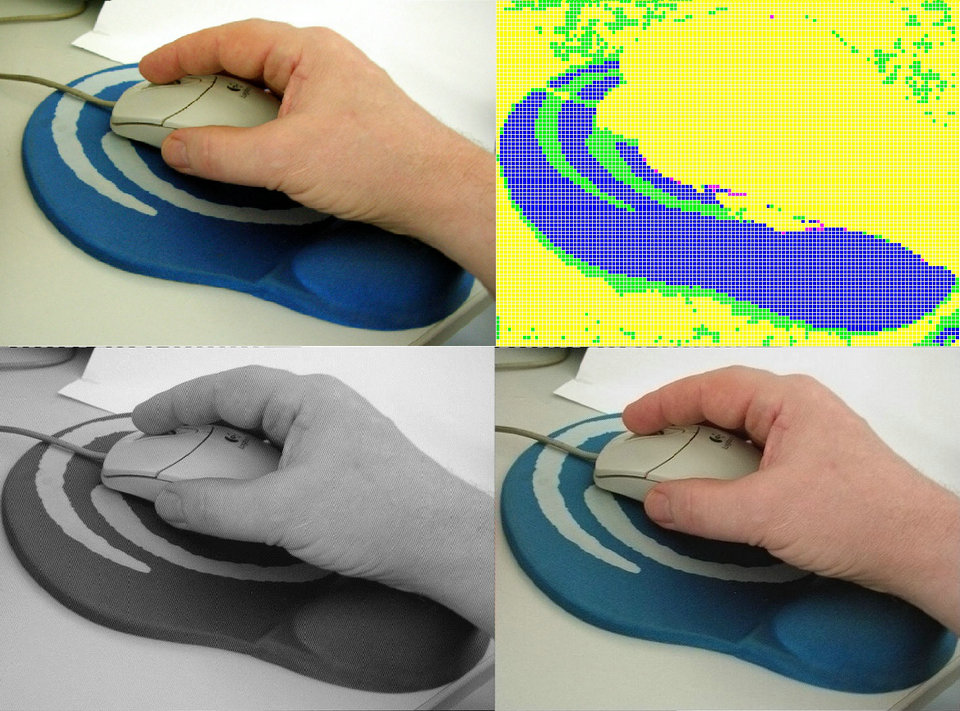Color recovery (or color restoration) is a process which can restore lost color, specifically to television programs which were originally transmitted in color, but for which only black & white copies remain archived. Not to be confused with colorization, color recovery is a newer process and is fundamentally different from colorization for several reasons. Firstly, color recovery can only be performed if the originally transmitted color signal can be reconstructed or recovered from some source, whereas this is not usually the case for traditional colorization. Secondly, colorization can be used to colorize films and programs that were made in black and white, using still color photos and/or some educated guesswork to manually choose a color palette. Conversely, the goal of color recovery is to reinstate (as closely as possible) the color signals of programs originally made in color as they were first seen. Color recovery reconstructs the color information from actual recovered signals and theoretically without depending on guesswork. As of 2010, color recovery has successfully been applied to episodes of the BBC TV programs Doctor Who, Dad’s Army, and Are You Being Served?.
Background
Due to the well-documented practice of wiping, many original videotape recordings of color programs were lost. However, in the case of the BBC, many telerecorded black & white film copies of affected programs survived. These black & white copies were made for overseas commercial exploitation of BBC programs. For a variety of technical and practical reasons (for example various incompatible international TV standards, and the then-high cost of videotape over that of film), black & white film copies were the preferred medium for selling programs overseas. This practice ultimately led to many programs which were originally made and transmitted in color only existing in black and white form after the practice of wiping finally ceased.
Methods of color recovery
From off-air recordings
During the 1970s, various off-air NTSC video-recordings were made by American and Canadian Doctor Who fans, which were later returned to the BBC. Whilst the quality of these early domestic video recordings was not suitable for broadcast, the lower-definition chrominance signal could be retrieved from them. This signal could be successfully combined with the luminance signal from digitally-scanned existing broadcast-quality monochrome telerecordings to make new color master copies, suitable for broadcast and sales. In the 1990s this method was carried out by the Doctor Who Restoration Team. Several color Doctor Who serials were subsequently released on VHS. Combining the video-recorded color signals with the monochrome telerecordings is a non-trivial task, requiring digital processing (for example matching up the different screen sizes of the two recordings). Thus, it wasn’t until the early 1990s that cheaply available, sufficiently powerful computer hardware and software made this task particularly practical at that time.
From chroma crawl
Black & white TV systems predate color, and so subsequent analog color broadcast systems have been designed with backwards-compatibility in mind (known as a compatible color system). Thus, the chrominance (color) signal is typically ‘shoe-horned’ into the same channel as the luminance (brightness) signal, modulated on a fixed frequency, known as the color subcarrier. Black and white televisions do not decode this extra color information in the subcarrier, using only the luminance to provide a monochrome picture. However, due to limited bandwidth in the video channel, the chrominance and luminance signals bleed into each other considerably, resulting in the color information showing up visibly as Chroma Crawl, or Chroma dots on black & white TV sets. This is normally considered a nuisance in analog broadcasting. However, since telerecordings were made from black & white TV screens and technicians at the time often decided not to apply a filter to remove this interference, these patterns are retained even in the existing monochrome film prints and theoretically contain the original color information. (Occasionally the color information was filtered out using a notch filter and is lost.) The idea to recover this information was originally suggested by BBC researcher James Insell.
In practice however, the recovery of this color information from telerecordings is highly complex for several reasons. Firstly, the color reference timing signal, known as the color burst, is absent from telerecordings, as it is nominally off the edge of the visible screen area being recorded. This timing has to effectively be recovered since the phase of the chroma dots, which is represented by their horizontal position on the screen, determines the hue of the reconstructed colors. Distortions in the geometry of the telerecordings due to the nature of physically recording from a non-flat CRT screen onto film means that a transformation has to be applied in order to infer the original positions of the chroma dots within the broadcast.
However, these technical obstacles were finally overcome in 2008, and software written by developer Richard Russell at the informal Color Recovery Working Group was put to use, finally resulting in the broadcast and release of Color-recovered episodes of Dad’s Army and Doctor Who.
Source From Wikipedia
